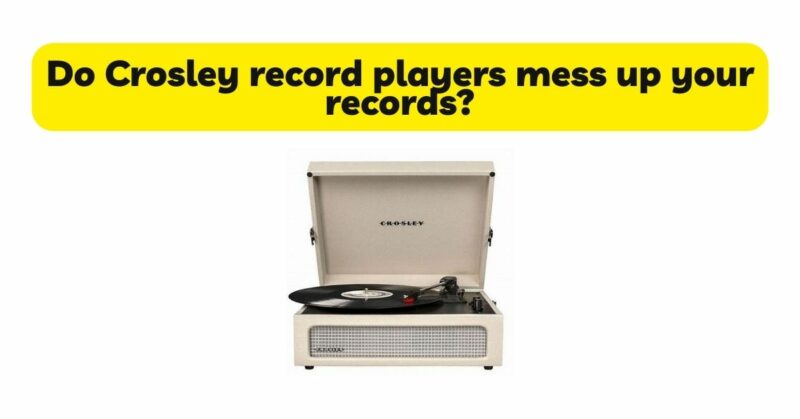Title: Do Crosley Record Players Mess Up Your Records? Examining the Impact of Crosley Turntables on Vinyl Record Playback
Introduction: The resurgence of vinyl records in recent years has brought with it a surge in the popularity of record players. Among the many brands available, Crosley stands out as a prominent name in the market, offering a range of affordable and visually appealing turntables. However, concerns have been raised within the audiophile community about whether Crosley record players have the potential to damage or compromise the quality of vinyl records. In this article, we will delve into this topic, exploring the design, components, and usage patterns of Crosley record players to determine their impact on record preservation.
Understanding Crosley Record Players: Crosley record players have gained popularity for their retro aesthetics and user-friendly designs. They cater to a wide audience, including casual listeners and newcomers to vinyl playback. To assess the potential effects on records, it is important to evaluate the construction and features of Crosley turntables in detail.
Build Quality and Materials: One common concern surrounding Crosley record players is their build quality and the materials used in their construction. Critics argue that the use of lightweight materials, particularly plastic components, can lead to increased vibrations during playback. These vibrations can result in stylus skipping or mistracking, which may ultimately impact the audio quality and potentially damage the records over time.
Tracking Force and Tonearm Design: The fixed tracking force and the design of the tonearm are additional factors that raise concerns among audiophiles. Tracking force refers to the pressure exerted by the stylus on the record’s grooves during playback. While high-quality turntables allow for adjustable tracking force, many Crosley models have fixed tracking force settings. This lack of adjustability can lead to excessive wear and tear on the record surface, diminishing its longevity and audio fidelity.
The design of the tonearm also plays a significant role in record preservation. Crosley record players typically feature a straight tonearm, which may lack the advanced anti-resonance features and precision bearings found in higher-end turntables. The absence of these features can contribute to increased vibrations and compromised tracking performance.
Needle Quality and Stylus Shape: The quality of the needle (also known as the cartridge) and the shape of the stylus are essential factors that affect both the durability and playback quality of vinyl records. Crosley record players commonly come equipped with a ceramic cartridge, which is a popular choice for entry-level turntables. While ceramic cartridges are generally durable, they may not offer the same level of precision and delicacy as higher-quality cartridges. Additionally, the shape of the stylus is crucial in minimizing record wear. Elliptical or spherical stylus shapes are generally preferred over conical shapes, as they distribute the tracking force more evenly across the grooves, reducing wear and preserving sound quality.
Anti-Skate and Adjustable Counterweight: Advanced turntables often feature anti-skate mechanisms and adjustable counterweights, which help minimize tracking errors and reduce record wear. However, many Crosley record players lack these adjustable features. Anti-skate mechanisms work to counterbalance the inward force applied to the stylus during playback, keeping it centered in the groove. The absence of anti-skate adjustment can result in uneven wear and potential damage to the record grooves, leading to compromised sound quality and decreased record lifespan.
Conclusion: The question of whether Crosley record players can harm vinyl records is a valid concern that warrants attention. While Crosley turntables offer affordable and visually appealing options for casual listeners and beginners, it is important to consider the potential long-term effects on record preservation and audio fidelity.
The lightweight plastic construction, fixed tracking force, and absence of adjustable features in Crosley record players raise concerns about stability, precision, and the potential for increased vibrations during playback. Additionally, the choice of components, such as the cartridge and stylus shape, can impact record wear and playback quality.
Ultimately, the impact of Crosley record players on vinyl records may vary depending on factors such as usage patterns, record condition, and individual listening preferences. For those seeking optimal record preservation and audio quality, investing in higher-quality turntables with better build quality, adjustable features, and advanced cartridge options may be a more suitable choice.


